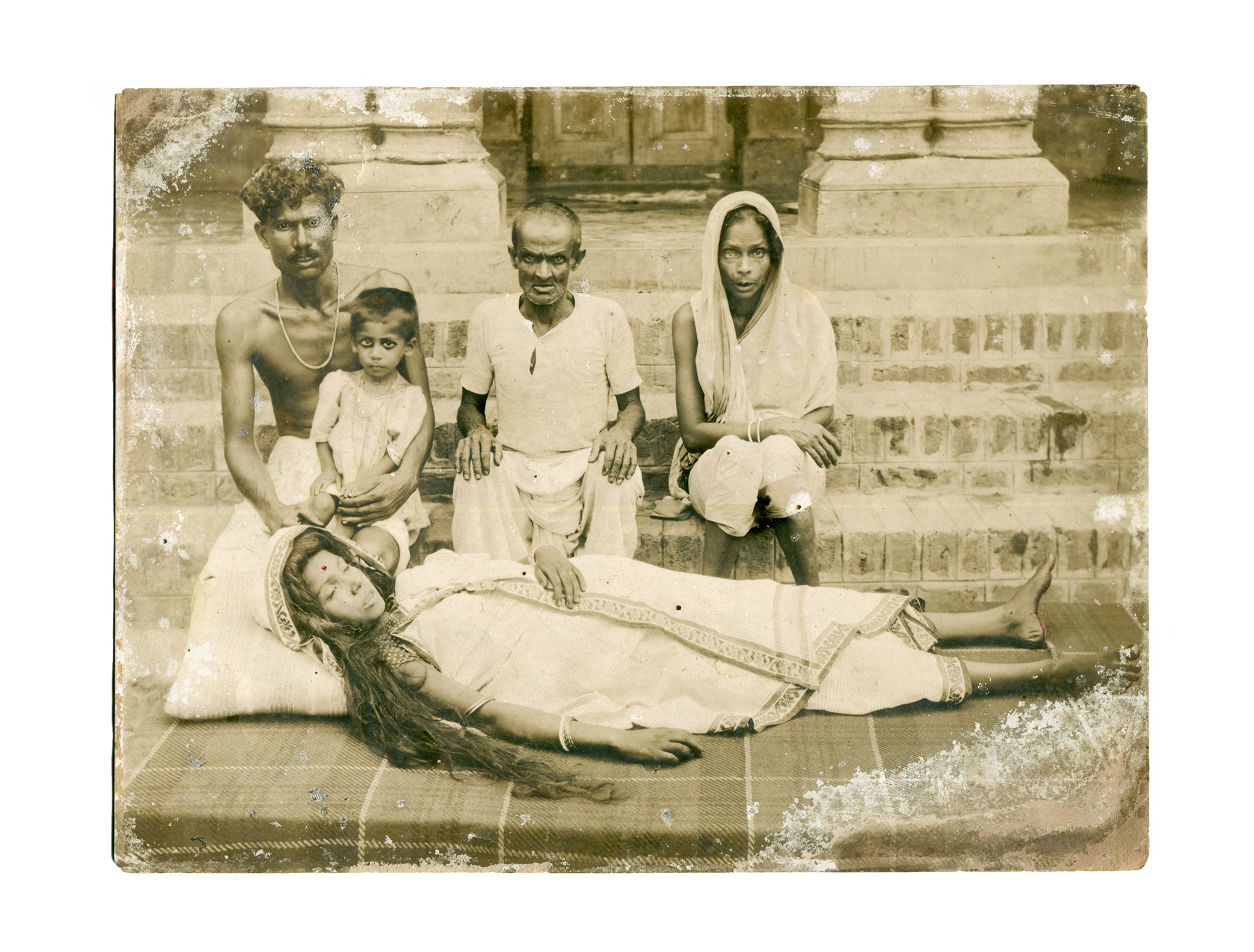
Photography in Khulna: A Historical Perspective
Nineteenth-century family photographs depict people looking wide-eyed at the camera with hand-painted sea shores behind them, serving as backdrops. In a photo dated 1937, family members sitting at the crematorium beside a woman’s body, stare back at the lens. A red bindi, the sign of wifehood, was painted on the woman’s forehead after the photograph had been printed. These photographs are part and parcel of the diverse history of photography in Bangladesh. They are evocative of the artistic practices of pioneering photographers. They bear witness to our social history. Above all, they are inseparable from our visual cultural tradition. Unfortunately, this tradition has largely been ignored by conservationists of cultural heritage. Nearly all initiatives and efforts, whether government or private, have exclusively focused on conserving historical buildings or archaeological sites such as palaces belonging to the Mughal or British era, mosques or grandiose houses belonging to zamindars.
The unwritten history of photography is deeply intertwined with the visual memory of the people of this land. Drik Picture Library undertook the task of conserving and documenting the history of photography through an oral history project in 2017. Up until now, preliminary information has been collected about photographic practices in 6 districts, namely, Khulna, Bogura, Manikganj, Joshore, Rangpur and Rajshahi. We started off by wanting to know the story of the first camera or the first photo studio of the district. Our questions hinged on: how did studio photography grow, did it revolve around a particular photographer? How have political events such as Partition, the Liberation War impacted on and influenced photographic practices? How have the state and society’s need for photographic images changed over time, how have they changed with technological changes in the camera? Are there class, gender and ethnic differences in the pursuit of photography as a hobby, and photography as a necessity? More broadly speaking, we attempted to discover the life histories of photographers, to know about their economic successes and struggles, and to unearth the stories behind the photographs taken by them.
This collection has been built from the little that we have learnt about Khulna photography. The collections which we tapped into largely contained passport photographs that had been taken for official purposes. But, as is generally assumed, not all faces were equally undemonstrative and reserved. We came across passport photographs where negatives had been painted slightly red to make the faces appear fair. Blemishless. We came across photographs of couples about to be married, or of newly-married couples, standing in front of pretty landscapes denoting ‘bidesh’ or faraway lands. The crematorium photograph, 86 years-old, is the oldest we came across. That it had been taken outside a studio indicates what we term ‘documentary’ photography was practised then as well, alongside studio photography. We have also come across pictures in which photographers had variously experimented with light.
Photographs taken by the likes of Tushar Kanti Ray Chowdhury, Nurul Huq Lavlu, Simson S Adhikari, Sohel Mahmud, and Nurul Azam Chowdhury — pioneers who variedly practised photography over a long period of time — and photographs from the collections of Retina and Obhishar studio, are central to this exhibition. Their infinite care in preserving these priceless historical artefacts has enabled Bangladeshis to learn about the practice of photography in the Khulna district. We are indebted to them. We also pay our respects to long departed photographers Bimol Kumar De and Abdul Bodi Tulu, whose contribution to the development of photography and the photo studio industry is uncontested.
We would like to emphasise that the history of Khulna photography which has been pieced together by us is an incomplete one. The advent of digital camera and print technology greatly upset the traditional practice of photography. Many photographers were forced to sell their cameras, in the process, they lost their collection of photographs. These are forever lost to us. We would also like to point out that missing in our historical reconstruction of Khulna photography are the stories of studio photography on the other side of the Rupsha river. Also missing are Khulna’s women photographers, we do not know whether there were any, what were their stories and struggles.
Drik is committed to writing these unwritten chapters of the story of Khulna photography. We hope that the residents of Khulna will remain as deeply involved in the continuation of this history-writing project.
Virtual Exhibition Link: Khulnar Alokchitro Chorcha